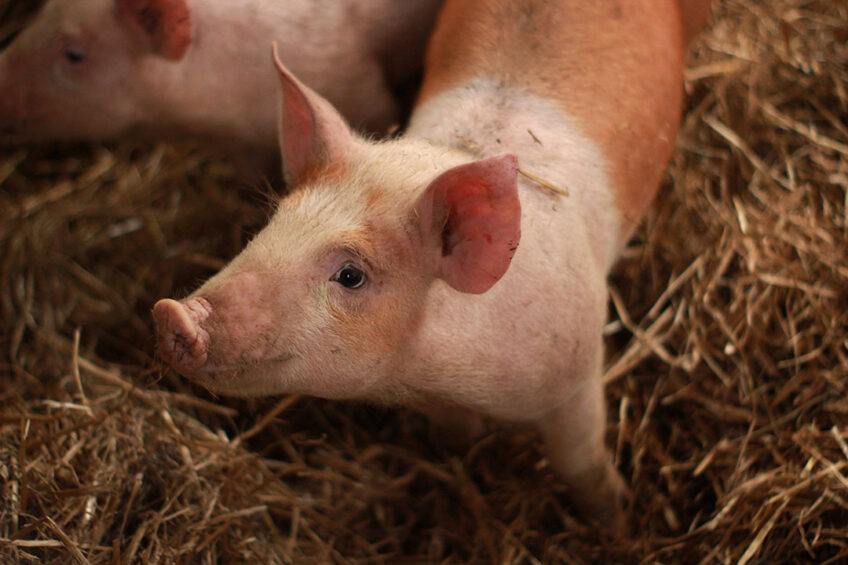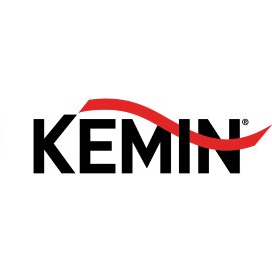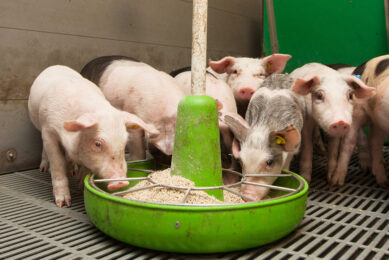Winning health strategies for piglets post ZnO

Replacing pharmacological doses of zinc oxide without increasing the use of antibiotics is a complex endeavour. Rather than focusing on a single approach, trial results suggest that successful antibiotic-free strategies rely on a holistic approach that effectively tackles the diverse mode of action of zinc oxide. Let’s see how with the use of algae β-(1,3)-glucan, Bacillus sp. PB6 and encapsulated organic acids.
The challenges of the post-zinc oxide era
The weaning period is a particularly stressful stage of pig production due to the psychological and managerial changes that may result in post-weaning diarrhoea (PWD) and deteriorated daily gain. PWD, which is a condition that often occurs at weaning, is frequently associated with infection by enterotoxigenic E. coli (e.g. K88 or F4), causes huge economic loss to the pig industry each year, and leads to increased use of antibiotics.
Treatment for PWD often relies on antibiotics. Even though the use of antibiotics varies from region to region, a scientific review of antibiotic use in Belgium noted that a vast majority (93%) of antibiotics administered were for prophylaxis. In contrast, metaphylaxis or treatment use was much smaller (7%). In the same review, antibiotics were commonly used during suckling and post-weaning, and gastrointestinal infections were the most common reason for using antibiotics.
Applying pharmacological doses of zinc oxide (ZnO) in post-weaning piglet diets – usually to a level of 2500 ppm of zinc – used to be commonplace across the industry to control PWD. However, from 26 June 2022, the use of high doses of ZnO is prohibited in the European Union. To address the challenge of pharmacological ZnO replacement, one must first identify how this ingredient works. Although the exact mechanism of ZnO against PWD has not yet been fully elucidated, we can already identify a few effects of ZnO.
Firstly, ZnO does not only come down to controlling pathogenic E. coli. ZnO exerts anti-inflammatory effects which help alleviate challenges in the gastrointestinal tract and supports the immune system of the young piglets. ZnO also supports the structure and function of the intestinal villi, which are deteriorated by the transition from a liquid diet to a more complex feed and by the increased level of stress. Additionally, ZnO has been shown to improve nutrient digestion. Given the diverse modes of action of pharmacological levels of zinc, implementing alternative antibiotic-free strategies is a complex endeavour for which a multi-factorial approach is paramount.
A winning multifactorial strategy
A trial was carried out in weaned piglets from 28 days of age to 70 days of age in semi-commercial conditions in the UK to evaluate the efficacy of replacing pharmacological levels of ZnO with 3 in-feed solutions to target some of the modes of action of ZnO.
Aleta is a highly concentrated in-feed solution that contains more than 50% of linear β-(1,3)-glucan derived from algae (Euglena Gracilis). The mechanism of action of these β-glucans promotes immune support and increased resistance to disease. Clostat, which contains spores of Bacillus sp. PB6 (ATCC PTA-6737) which originated from animals that resisted an enteritis outbreak, was used to effectively promote a healthy microbiome and reduce the risks of enteric infections. Finally, Formyl, an encapsulated solution consisting of formic acid and citric acid, was used to control Enterobacteriaceae such as E. coli within the intestinal tract.
A total of 380 piglets (50% Large White x 25% Landrace x 25% Pietrain) were used in the trial over 3 batches. Piglets were balanced according to sex and weight and randomly allocated to either a Control or Treatment diet (Table 1). Each diet was replicated 9 times. Live weight and average daily weight gain (ADG) were measured. Faecal samples from the 2 first batches were collected and analysed for consistency. Faecal dry matter and pH were also analysed. Success criteria were defined as comparable outcomes in both experimental groups.
During the pre-starter phase (28-42 days), piglet ADG and live weight were similar in the Control diet supplemented with 2,500 ppm of ZnO and in the Treatment group supplemented with algae β-(1,3)-glucan, Bacillus sp. PB6 and organic acids (P>0.05). The Median faecal diarrhoea score was also comparable and indicated normal faeces in both groups, which indicates that both strategies were able to prevent PWD.
Faecal dry matter and pH analysis also showed similar results in both groups. Furthermore, using the 3 alternative ingredients improved piglet growth compared to the control diet during the starter period (43-70 d). Overall, the alternative strategy significantly improved the ADG (+4.5%) and the average piglet weight (+3%) compared to the ZnO diet (P<0.05) during the entire study period (28-70 d).
Conclusion
It is our duty to reduce the reliance of pig production on antibiotics. It, therefore, is key to wean piglets successfully, not relying on antibiotics to control infections in the post-ZnO era while ensuring that we have the desired performance. The results of this study indicate that a preventive health strategy that included algae β-(1,3)-glucans, Bacillus sp. PB6 and encapsulated formic and citric acid could replace pharmacological levels of ZnO without using antibiotics. PWD was prevented and ADG was maintained and even increased during the entire study period.
References available on request.



